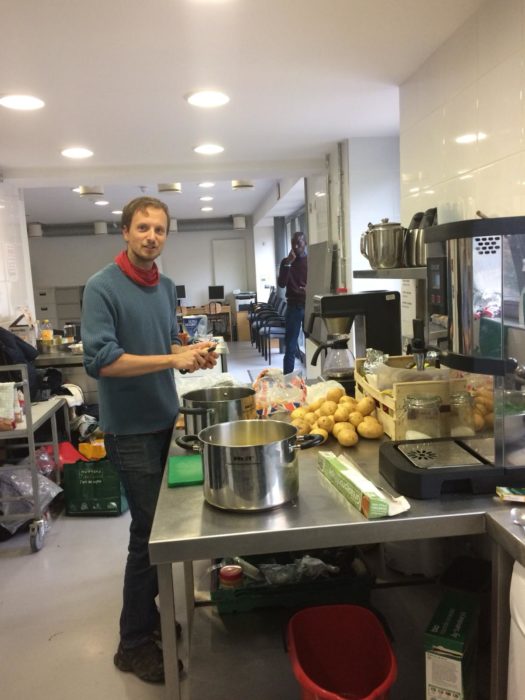Time and space: reflections on volunteering at Room to Heal
Our voices 1 January 2019

It’s been more than a month since I became a volunteer for Room to Heal. In that time I’ve learned some surprising facts – like all the famous people who live in Hackney, and what peanut plants look like and how you can grow them in a London garden box. But I’ve also learned much more.
I didn’t have many preconceptions about my three-month internship; I kept an open mind. I applied to Room to Heal because its community-based approach sounded like what I was looking for and, having worked in Germany as a refugee caseworker, I thought I might be useful.
After the interview, I left with a big smile on my face. I’d talked to Elli, the new director, for nearly an hour. She showed me the beautiful garden at Mildmay Community Centre, where Room to Heal is based. And she told me about another beautiful garden – Culpeper Community Garden – where Room to Heal has a plot, and where staff and members gather once a week for a meal. I immediately felt right here.
My tasks turned out to be different from what I first imagined. I soon realised this work – both cultivating a garden and building a community – takes time. To do more interesting work, you need to stay longer than three months. And Room to Heal seems like a good place to stay a long time!
Why do I say that? Well, take the plot at Culpeper garden. At first it looks beautiful – a mix of vegetables, flowers, herbs, some plants that no one knows the name of, and an empty patch that where you can think about what you want to plant.
Then you meet the person who planted one of these vegetables and suddenly it’s not just a vegetable anymore. It has a story.
Another time you learn more names of the plants – like forget-me-nots. Then you discuss people’s different plans about what to grow next and you see this plot is full of thoughts and ideas.
Then the next week it’s cold and no one wants to do anything. But you see one little bright-red strawberry that shows that the garden is growing and alive. After a while you start noticing the small changes.
Days when no one else wants to work on the garden, I feel hesitant to do it by myself. The garden has a long history and I’m still in the process of connecting to it. It’s the community’s space. I don’t want to interfere too much because I know I’ll have to leave soon.
The same is true of the community itself. The way members have welcomed me in the garden on Fridays has been heartwarming. But it takes time to feel part of the community. It has grown a lot – more in quality than in quantity – over the last years. Room to Heal is about trust and relationships. And as I say, that takes time.
In the office in Mildmay Community Centre I started with a super-interesting task – researching organisations that support refugees who want to speak out about their experiences. I found out about some other great organisations here in the UK. I also did other research, into fundraising foundations, for example. As happens when you’re new to a city or a country, some of the things I discovered were already well known to the Room to Heal staff. Another sign that it takes time to grow into a new place.
But what really matters is that everyone at Room to Heal is super supportive and patient, and it’s a really peaceful environment.
In the office there are photos – I imagine they might be a retreat – where people have arranged their bodies to make up the letters of ROOM TO HEAL with their bodies. I think this is symbolic of the organisation. All the people in the community and staff and their connections to each other are what makes up Room to Heal.
I’m very glad to have the chance to be part of it for this short stretch of time!